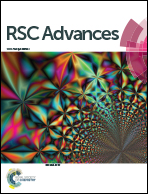Effect of amorphous cellulose on the deformation behavior of cellulose composites: molecular dynamics simulation
Abstract
This study was aimed at predicting and enhancing the properties of the blend, as well as exploring the mechanism, of a polylactic acid (PLA)/amorphous cellulose composite system through molecular characterization. The static properties of the amorphous cellulose/PLA blend model and the mechanical response of the material under uniaxial tension were studied by molecular dynamics simulation to establish the structure–property relationship. PLA and cellulose showed poor miscibility, the change in the compatibility of the mixture can be attributed to the hydrogen bond interaction between the cellulose and PLA functional groups. The radius of gyration, interaction and free volume of the molecular chain in the blend were analyzed. The conformational changes under tensile deformation indicated that the load-bearing role of cellulose in the system was the main reason for increasing the strength of the material. The yield process was considered to be the infiltration of free volume caused by deformation.



 Please wait while we load your content...
Please wait while we load your content...